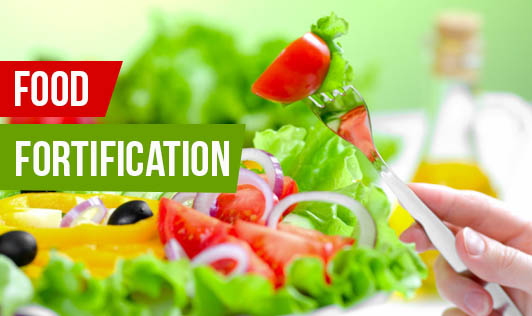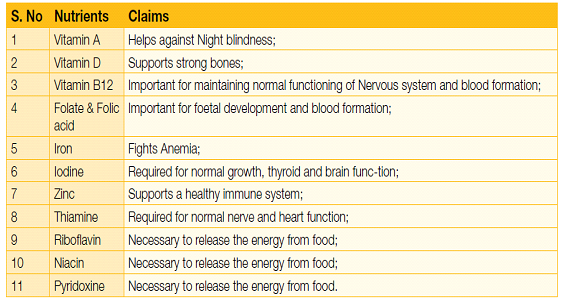Description

Disclaimer: Copyright infringement not intended.
Context
- Over 70% of India’s population consumes less than half the daily recommended dietary allowance of micronutrients - The Food Safety and Standards Authority of India’s (FSSAI’s) Food Fortification Resource Centre (FFRC) has reported.
Food Fortification
- Fortification is the practice of deliberately increasing the content of an essential micronutrient, i.e. vitamins and minerals (including trace elements) in a food, so as to improve the nutritional quality of the food supply and provide a public health benefit with minimal risk to health.
- For example, adding iodine and iron to edible salt.
What is the need for Fortification in India?
- Malnutrition is the primary reason behind 69 per cent of deaths of children below the age of five in India, according to a UNICEF’s The State of the World’s Children 2019 report.
- The report further states that every second child in India, under five years of age, is affected by some form of malnutrition.
- Malnutrition prevents brain development, body growth, immune systems from working effectively, and increases lifelong risk of disease and disability.
- India is ranked at 103 out of 119 countries on Global Hunger Index, 2017.
- Over 70 percent of India’s population still consumes less than 50 percent of RDA for micro-nutrients.
- One third of India’s population is suffering from vitamin and micro-nutrient deficiencies globally, are in India.
- The control of micronutrient deficiencies is an essential part of the overall effort to fight hunger and malnutrition.
- India has been implementing a variety of strategies to address anemia and micronutrient deficiencies which include iron-folic acid supplementation, vitamin A supplementation, nutrition health education to encourage dietary diversity, and others. However, the anemia levels continue to be high.
- This, therefore, requires the introduction of strategies such as food fortification which are evidence based, tried and tested in other parts of the world.
Compulsory Fortification
- India is considering compulsory fortification of rice from 2024 as a significant percentage of the population continues to suffer from malnutrition and anemia.
- The government is likely to announce a policy to help industry ramp up production of rice fortified with iron, folic acid and Vitamin B12.

Significance of Rice Fortification
- Rice is a staple consumed regularly in the preparation of many common local dishes.
- Micronutrient deficiencies of public health significance are widespread in most countries consuming high levels of rice; thus rice fortification has the potential to help aid vulnerable populations.
- Rice kernels can be fortified with several micronutrients, such as iron, folic acid and other B-complex vitamins, vitamin A and zinc.
- Similarly, other vital micronutrients can be added to staples like wheat flour, oil, and milk.
- The reason behind choosing staple items is to reach a larger population.
About FSSAI
- Food Safety and Standards Authority of India (FSSAI) is an autonomous body established under the Ministry of Health & Family Welfare, Government of India.
- The FSSAI has been established under the Food Safety and Standards Act, 2006, which is a consolidating statute related to food safety and regulation in India.
- FSSAI is responsible for protecting and promoting public health through the regulation and supervision of food safety.











